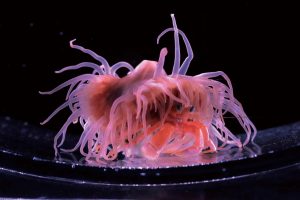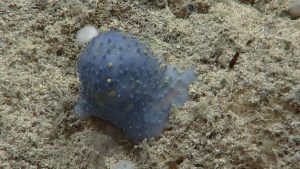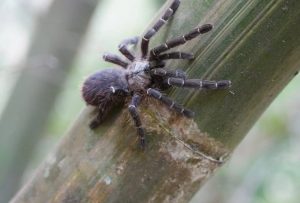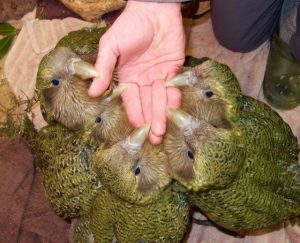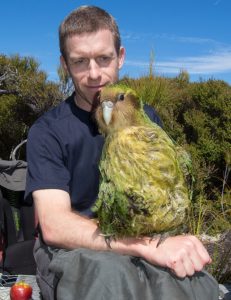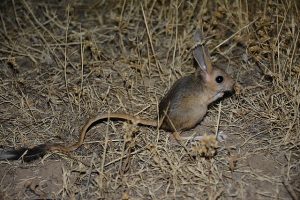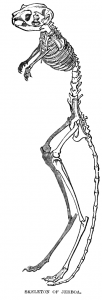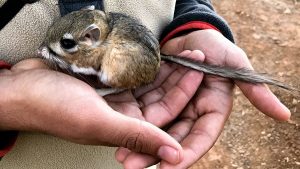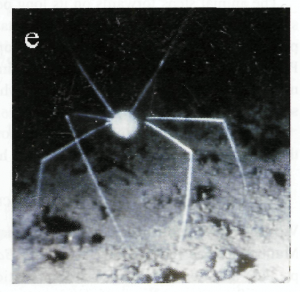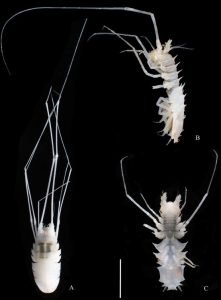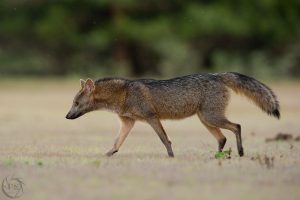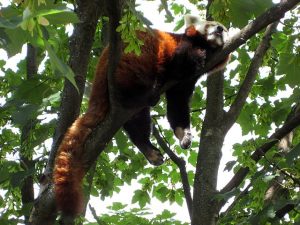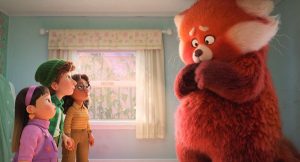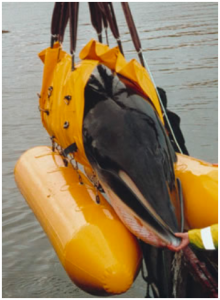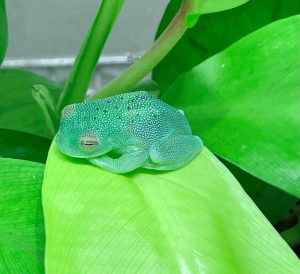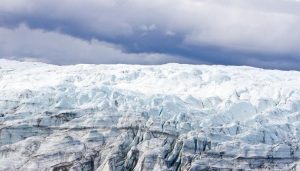Podcast: Play in new window | Download (Duration: 9:52 — 11.5MB)
Thanks to Fabiana and Hazel for their suggestions this week, where we learn more about dogs and cats!
Further reading:
Gene mutation that makes dogs small existed in ancient wolves
Feline genetics help pinpoint first-ever domestication of cats
Cats Learn Names of Their Feline Friends
A cat (Dracula, specifically, with Dracula the toy):
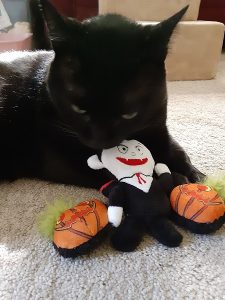
A dog, in case you’ve never seen a dog before:

Show transcript:
Welcome to Strange Animals Podcast. I’m your host, Kate Shaw.
This week we’re going to revisit two great topics suggested by two great listeners, Fabiana and Hazel. They suggested dogs and cats, respectively. We’ve covered both before, but there’s always more to learn about any animal. Let’s look specifically at two recent studies that can add to our knowledge.
We’ll start with Fabiana’s suggestion of dogs. Results of a study published in January of 2022 examined the genetics of wolves and dogs to see how small dog breeds developed. We’re not completely sure how domestic dogs are related to wolf species alive today, since dogs have been domesticated for tens of thousands of years, and were probably domesticated at different times in different places by different groups of people, and potentially domesticated from different species of wolf, and since wolves and dogs can interbreed and produce fertile offspring. It’s very complicated, to say the least.
Wolves are roughly the same size throughout the world, depending on species and environment. The gray wolf, which is native to the northern parts of North America and most of Eurasia, stands about 2 and a half feet tall at the shoulder, or about 85 cm, and weighs around 88 lbs, or 40 kg, on average, although wolves who live in warmer areas tend to be smaller. There are certainly dog breeds bigger than this, but there are lots of dog breeds that are much, much smaller. I mean, the Chihuahua only grows around 9 inches tall, or 23 cm, and usually barely weighs 6 lbs, or 2.7 kg.
The prevailing belief is that small dog breeds came about because people bred the smallest dogs together and chose the smallest puppies from that pairing to breed to other small dogs. That’s true, but the genetic capacity for small size had to be there to start with in order to breed a 6-lb Chihuahua from an 88-lb wolf, no matter how many generations of dogs were in between. Researchers knew the genetic code for this size difference had to be somewhere, but it took a decade of study before they found it.
Once they found the growth hormone mutation that could allow for very small size when expressed, they searched for it in over 200 dog breeds to see if it was there in all dogs. Sure enough, it was. The scientists hypothesized that the genetic mutation showed up after dogs were domesticated, somewhere around 20,000 years ago. To test this, they looked for the mutation in the genetic profiles of both living and extinct canid species.
To their surprise, the mutation was present in all of them, including the genetic profile of a Siberian wolf that lived 54,000 years ago. Without this mutation, we wouldn’t have Chihuahuas or Yorkshire terriers or other small dog breeds that so many people love. That means the mutation was beneficial for domesticated dogs, but at the same time it was mostly non-beneficial for wild canids.
When dogs were domesticated around 20,000 years ago, and possibly well before that, the world was in the middle of a glacial maximum. The climate throughout the entire Earth was considerably colder than it is today. Ocean levels were lower because so much water was frozen, with ice sheets covering northern Europe and North America to a depth of about 2 1/2 miles, or 4 km. Northern Asia had fewer ice sheets but was much dryer than it is today. In fact, the world was a lot dryer overall, so places that weren’t covered in ice were more likely to be deserts, leading to massive dust storms and just a general dustiness throughout the world. Most of northern Africa and central Australia were what’s called “tropical extreme desert,” which doesn’t sound like any fun, but a lot of Asia was a polar desert. Most of Europe and eastern North America that wasn’t covered in ice was tundra or taiga, and even the most hospitable parts of the world were mostly open woodland and savannas. In other words, this was a world that favored really big animals like mammoths and woolly rhinoceroses and giant deer and buffalo and moose, and wolves needed to be big in order to hunt this megafauna.
But the world wasn’t going to be so cold for much longer. The ice sheets began to melt as the climate worldwide warmed up around 19,000 years ago, which led to sea levels rising and all sorts of other dramatic changes. Humans took their dogs and migrated to lots of places where they’d never been able to live before. Before this, dogs were probably mostly hunting partners, but as life got easier for people as mild winters and rainy spring weather became more common, dogs were more likely to be pets as well as working animals. People started selecting for smaller dogs, since a small dog eats less and is just plain cute. If it weren’t for that little genetic mutation in canids, the smallest dogs wouldn’t be all that much smaller than a Labrador.
Next, Hazel suggested we learn more about cats. Cats were domesticated a lot more recently than dogs, and a genetic study published in December 2022 determined that all pet cats in the world today are descendants of wild desert cats domesticated about 10,000 years ago in the fertile crescent in the Middle East. As we learned in episode 166, this was around the time that people were developing farming, and farming means you need to store grain. If you store grain, you attract mice and other rodents. Wildcats started hanging around farms and houses to catch rodents, and since the humans didn’t want the rodents, they were fine with the cats. Farms that didn’t have any cats had more rodents eating their stored grain, so it was just a matter of time before humans made the next logical step and started taming wildcats so they could trade cats to people who needed them.
The study was led by a feline geneticist named Leslie Lyons, and I only mention her name because it’s so perfect that someone with the last name Lyons would study cats and their relatives. Lyons and her team compared genetic samples taken from cats throughout the world and determined that all domestic cats are descendants of animals who originally lived in the Fertile Crescent. This is the same conclusion as a 2008 study by a different group of scientists, but the genetic tools used these days are much more sophisticated.
Cats definitely started out as working animals just like dogs did, but it probably wasn’t too long until people were treating them like pets. Cats are cute and soft, and people just like animals. We know that cats were treated as more than just a useful thing to have around because of an archaeological discovery from 2004. A human burial site on the island of Crete dated to about 9,500 years ago contained the remains of a human along with jewelry and other items, but also the remains of a cat. The cat had been buried separately in its own tiny grave right next to the person. There’s no sign that the cat was killed on purpose, so it’s possible it died separately and was buried next to the person who loved it.
Two separate studies were published in 2022 about cats and names. One study determined that cats who live in a household with at least one other cat learn the other cats’ names as well as their own. The other study determined that cats who live in a household with more than one person learn the names of their people. Personally, I don’t know how my cats can possibly know their names considering I call them by so many pet names, including puppy and bunny and squishmallow and you horrible little monster. However, in an unscientific study conducted just now by me, with a sample of one, when I called Poe’s name, he looked up at me and Dracula, who was lying on the bed next to me, looked at Poe. So I guess they’ve figured it out.
You can find Strange Animals Podcast at strangeanimalspodcast.blubrry.net. That’s blueberry without any E’s. If you have questions, comments, or suggestions for future episodes, email us at strangeanimalspodcast@gmail.com. If you like the podcast and want to help us out, leave us a rating and review on Apple Podcasts or Podchaser, or just tell a friend. We also have a Patreon at patreon.com/strangeanimalspodcast if you’d like to support us for as little as one dollar a month and get monthly bonus episodes.
Thanks for listening!
